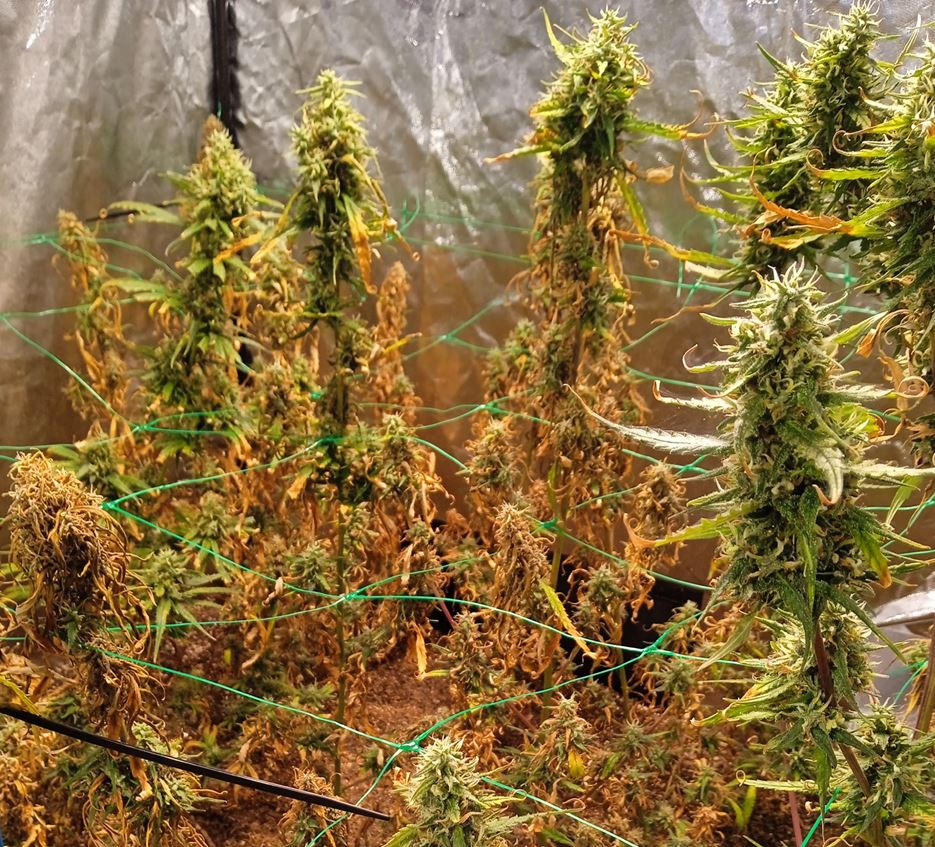What is Fusarium?
Fusarium is a large species of saprophytic fungi, in which most of the strains in the species feed on decaying plant matter. This characteristic allows it to survive in various environments, temperature and humidity ranges, which makes it a cosmopolitan fungi.
When it infects living plants, Fusarium causes a disease known as fusariosis, which, depending on the specific variety of Fusarium, can cause damage to the root, stem, leaves or flowers. For example, in the case of F. solani it affects the roots and generates a sudden wilting in plants whose appearance does not betray any deficiency or pest. Many times this effect is so rapid that it is interpreted as a lack of irrigation and the addition of water does not improve the situation. An other variety of Fusarium affects the stem, generating brown spots. It is F. oxysporum, which slows down the exchange of fluids in the plant generating the same symptoms as other varieties of fusarium: sudden wilting of branches or the whole plant.
How do I know if my plant has fusarium?
The appearance of the most common symptoms, wilting, changing colours and dry out plants, is a sign that the fungus has already begun colonization of the plant and we must take urgent measures: if possible, cut with clean instruments the affected parts and remove them from the growing area.
Preliminary symptoms vary according to the type of Fusarium affecting your crop and include spots on the stem, lesions and a general exhausted appearance that is not consistent with the space available to the plant or the nutritional regime.
What to do now?
It should be noted that if a plant shows symptoms of Fusarium, unlike other fungi, its treatment is more complicated and the infection progresses rapidly.
For example, in the case of botrytis, we can remove part of an affected bud and prevent the other flowers from becoming infected, saving the crop. This is much more difficult in the case of Fusarium because it is a fungus that produces a systemic infection.
When mortality occurs in young plants, which "collapse" due to an apparent weakness at the base of the stem, it is commonly referred to as "damping off" or fungal wilt, produced by fungi of the genus Pythium, Rhizoctonia and, of course, Fusarium.
How to beat Fusarium?
If we observe that the symptoms are concentrated in one part of the plant, immediately remove the affected part and keep a frequent observation to control the advance of the symptoms. Keep in mind that this does not mean that the plant will survive: Fusarium infections are usually fatal.
If the plant is in the vegetative period or we are far from harvest, you can use a systemic fungicide as many do, although it has its disadvantages if we intend a crop without artificial chemicals.
An excellent organic option that can also be prepared at home, is a extract of the plant known as horsetail, Equisetum arvense. This preparation prevents all types of fungi and can be used foliar (spray) and through irrigation and works much better as chemicals. Spray your plants with water with this extract of horsetail, to prevent or to fight fungus, molds and some pests.
Cookies help us deliver our services. By using our services, you agree to our use of cookies.



